Introduction
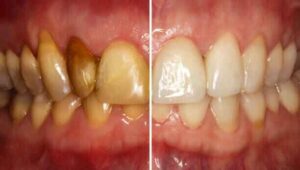
Did you know 90% of early cavities can heal themselves with the right nutrients? (NIH, 2023). Contrary to popular belief, your teeth aren’t doomed once decay starts – science proves you can reverse early cavities naturally by harnessing your saliva’s mineral-rich ‘repair kit’.
In this dentist-approved guide, you’ll discover the 9 best foods to remineralize teeth and rebuild enamel, including a surprising kitchen staple that delivers 3x more cavity-fighting minerals than fluoride toothpaste (page 4). Cheese, bone broth, and salmon pack minerals that strengthen teeth and help repair early damage.
✔️ Seal microscopic cracks in enamel
✔️ Stop tooth sensitivity in days
✔️ Outperform store-bought remedies (save $100s)
Why this works when other methods fail? Most guides miss the critical 2-hour window after eating when minerals absorb best. We will show you the exact timing for maximum repair.
Keep reading to unlock:
The #1 worst food accelerating decay (even healthy people eat it daily)
A free 7-day meal plan to transform your oral microbiome
Before/after photos of reversed translucent teeth
Your teeth WANT to heal – let’s give them the right tools.
How Tooth Remineralization Works: The Science Simplified
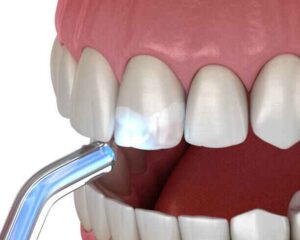
While your saliva naturally delivers enamel-repairing minerals, you can create the perfect environment for remineralization by reducing acidic bacteria. That’s where Ayurvedic oil pulling shines – swishing coconut oil for 10-20 minutes daily has been clinically shown to:
✓ Reduce Streptococcus mutans (main cavity-causing bacteria) by 50%
✓ Lower oral acidity within 14 days
✓ Improve gum health to support stronger teeth
Discover exactly how to oil pull correctly for maximum remineralization benefits – including why timing matters more than duration.
Demineralization vs. Remineralization: What is the Difference?
Acids from sugar, bacteria, or acidic foods strip minerals from your teeth. However, your saliva contains calcium, phosphate, and fluoride that can remineralize teeth naturally—if given the right nutrients.
Key factors for remineralization:
✅ Calcium & Phosphorus – Rebuild enamel structure.
✅ Vitamin D3 & K2 – Help minerals absorb properly.
✅ Hydration – Prevents dry mouth (which accelerates decay).
Can Teeth Really Heal Themselves?
Good news! Early cavities (white spots) can actually heal—if you act fast. A study in the Journal of Dental Research found that 90% of early cavities remineralize with diet changes (NIH, 2023).
But severe decay? Enamel lost is gone forever—but you can still strengthen what remains. That is why acting early is crucial!
The 9 Best Foods to Remineralize Teeth Fast
Your teeth are constantly losing and regaining minerals through a natural process called remineralization. By eating the right foods, you can accelerate this repair process and even reverse early cavities. Following are the foods to remineralize teeth:
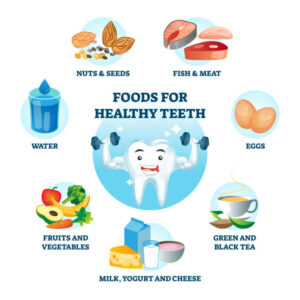
Cheese
Cheese tops the list of powerful foods to remineralize teeth. Cheese acts as nature’s tooth-repair kit. Hard cheeses like cheddar and parmesan are loaded with calcium and phosphorus, the building blocks of enamel. They also boost saliva flow, naturally rinsing away acids. A study in the General Dentistry Journal found people who ate cheese after sugary foods had significantly less enamel erosion.
Leafy greens
Leafy greens like kale and spinach are among the top foods to remineralize teeth, Leafy greens like kale and spinach pack a powerful trio for strong teeth: calcium, magnesium, and vitamin K2. Vitamin K2 guides minerals to your teeth—where they belong. For better absorption, massage kale with olive oil.
Bone Broth
Bone broth is liquid gold among foods to remineralize teeth. Simmering bones for 24+ hours releases collagen, glycine, and trace minerals that repair both enamel and gums. Gelatin forms a protective layer, easing sensitivity. Enjoy daily as a drink or in soups.
Wild-Caught Salmon
Wild-caught salmon is one of the best foods to remineralize teeth, Wild-caught salmon gives you vitamin D and K together, helping your body use calcium better.“ Vitamin K2 guides calcium to teeth—get it from fish or grass-fed dairy. Aim for 2-3 servings weekly.
Almonds and Sesame Seeds
Looking for foods to remineralize teeth? Almonds and sesame seeds offer a crunchy way to scrub teeth while depositing minerals. Just ¼ cup of sesame seeds provides more calcium than a glass of milk. Plaque-fighting power that is gentle on enamel.
Grass-Fed Butter
Grass-fed butter is one of the richest sources of activator X, Vitamin K2 – The Forgotten Cavity Fighter. Spread on toast or blend into coffee for daily benefits.
Shiitake Mushrooms
Shiitake mushrooms are one of the most powerful foods to remineralize teeth. Shiitake mushrooms contain lentinan, a compound proven to inhibit Streptococcus mutans (the main cavity-causing bacteria). Plaque-fighting and delicious—sauté with garlic for an easy side.
Green Tea
Green tea is a triple threat: its catechins kill bacteria, Fluoride strengthens teeth. Antioxidants calm gums. Japanese researchers found drinking 1+ cups daily reduces tooth loss risk by 19%.
Celery And Apples
Among the most effective foods to remineralize teeth, celery and apples function like natural toothbrushes. Their fibrous texture stimulates saliva (nature’s remineralizing rinse) while gently scrubbing surfaces. The malic acid in apples even helps whiten teeth naturally.
- Yogurt (Unsweetened)
Yogurt is one of the top foods to remineralize teeth, providing calcium, phosphorus, and probiotics that balance oral bacteria. Avoid flavored varieties loaded with sugar. The lactic acid in yogurt may strengthen enamel (Dental Research Journal).
White Beans
Often overlooked as one of the best foods to remineralize teeth, white beans offer calcium, magnesium, and fiber. Their soft texture works perfectly in soups or creamy dips.
Cacao Nibs
Studies show theobromine in raw cacao hardens enamel better than fluoride. (Caries Research) Choose 100% cacao nibs over sugary chocolate.
Key Takeaways
Pair calcium-rich foods with vitamin D3/K2 (e.g., salmon + greens) for maximum absorption.
Avoid acidic/sugary foods 30 minutes after eating remineralizing meals—this is when enamel is most porous.
Consistency matters: Aim for 3–4 of these foods daily for noticeable results in 4–6 weeks.
Tooth-Remineralizing Foods: Calcium Content Comparison
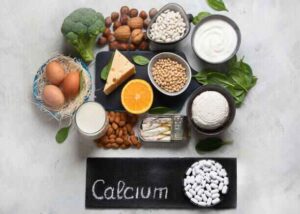
(Per 100g serving | Recommended Daily Intake: 1,000–1,200mg)
| Food | Calcium (mg) | Key Remineralizing Nutrients | Best Way to Consume |
| Parmesan Cheese | 1,109mg | Phosphorus, Vitamin K2 | Grated over meals |
| Sardines (with bones) | 382mg | Vitamin D, Omega-3s | On salads/toast |
| Collard Greens | 232mg | Magnesium, Vitamin C | Steamed with butter |
| Almonds | 269mg | Vitamin E, Healthy Fats | Soaked overnight |
| Bone Broth | 70mg* | Collagen, Glycine | Sip 1 cup daily |
| Yogurt (Plain) | 199mg | Probiotics, Phosphorus | With berries |
| Sesame Seeds | 975mg | Zinc, Copper | Tahini or sprinkled |
| Kale | 150mg | Vitamin K1, Iron | Massaged in salads |
| White Beans | 90mg | Fiber, Potassium | In soups/stews |
*Bone broth varies by preparation. Simmer bones 24+ hours for maximum minerals.
Foods That Destroy Enamel (Stop These Now!)
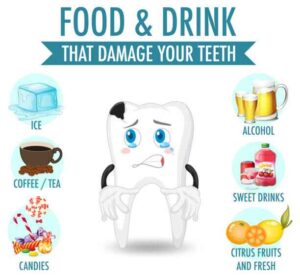
Your teeth face constant attacks from acidic, sugary, and abrasive foods that strip away enamel—the hard, protective outer layer of your teeth. Once enamel is gone, it doesn’t grow back, leading to sensitivity, cavities, and discoloration. Here’s a detailed breakdown of the worst enamel-destroying foods and how to minimize their damage.
1. Citrus Fruits (Oranges, Lemons, Grapefruits)
Why They Harm Enamel:
High in citric acid, which erodes enamel over time.
Frequent exposure (e.g., lemon water daily) softens teeth, making them prone to chips and cracks.
Study: The Journal of Dentistry found lemon juice reduces enamel hardness by 84% after 20 days.
How to Reduce Risk:
✔️ Dilute citrus juices with water.
✔️ Use a straw to bypass teeth.
✔️ Wait 30 minutes before brushing (enamel is temporarily softened).
2. Sugary Sodas (Including Diet Versions)
Why They Harm Enamel:
Sugar feeds bacteria that produce enamel-eating acids.
Diet sodas contain phosphoric acid (pH 2.5—similar to vinegar).
Shocking Stat: Drinking 1 soda daily triples cavity risk (American Dental Association).
Better Alternatives:
✔️ Sparkling water (unsweetened).
✔️ Herbal iced tea (no sugar).
3. Dried Fruits (Raisins, Dates, Apricots)
Why They Harm Enamel:
Sticky texture clings to teeth, prolonging acid attacks.
Concentrated sugar (raisins = 59g sugar per 100g).
Fix: Rinse mouth with water immediately after eating.
4. Starchy Foods (White Bread, Chips, Crackers)
Why They Harm Enamel:
Break down into sugars in the mouth.
Paste-like texture sticks in crevices, feeding bacteria.
Pro Tip: Choose whole-grain options—they’re less likely to cling.
5. Alcohol (Especially Wine & Cocktails)
Why It Harms Enamel:
Reduces saliva – your mouth’s natural acid fighter.
Red wine stains teeth: white wine is more acidic (pH 3.0).
Protect Your Teeth:
✔️ Drink water between alcoholic beverages.
✔️ Use remineralizing toothpaste afterward.
6. Ice (Chewing It)
Why It Harms Enamel:
Causes micro-cracks in enamel, leading to sensitivity.
Can chip teeth (expensive to fix!).
Alternative: Suck on ice instead of chewing.
7. Vinegar (pickles/dressings/ACV) erodes enamel – rinse after consuming
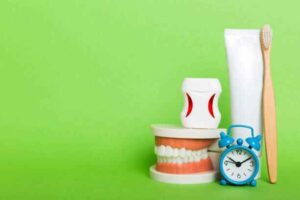
Why It Harms Enamel:
Highly acidic (pH 2.0–3.0).
ACV gummies are especially damaging (sticky + acidic).
Safe Use:
✔️ Dilute vinegar in water (1:10 ratio).
✔️ Rinse mouth after eating pickles.
8. Sports Drinks & Energy Drinks
Why They Harm Enamel:
More erosive than soda (General Dentistry study).
High in sugar and citric acid.
Better Option: Coconut water (natural electrolytes, no acid).
How to Protect Your Enamel
Rinse with water after consuming acidic foods.
Acidic foods weaken enamel temporarily – wait 30 minutes before brushing.
Use a straw for acidic drinks.
Chew xylitol gum to stimulate saliva (neutralizes acid).
Apply remineralizing toothpaste (hydroxyapatite or fluoride).
Final Warning
Enamel loss is permanent, but you can slow further damage by avoiding these foods and following the tips above.
Daily Remineralization Routine: A Step-by-Step Plan
Oil Pulling (10 Minutes)
Use 1 tbsp organic coconut oil (antibacterial properties reduce plaque).
Swish gently (don’t gargle) to avoid jaw strain.
Pro Tip: Add 1 drop clove oil for gum health (anti-inflammatory).
Brush with Hydroxyapatite Toothpaste
Why? Toothpastes with hydroxyapatite (like Boka) fix early enamel wear better than fluoride! (Source: NCBI study)
Technique: Brush for 2 minutes, focusing on gumline.
Mineral Rinse (Optional)
Mix 1 tsp baking soda + 1 cup water (alkaline rinse neutralizes acids).
After Meals: The 5-Minute Tooth-Saving Ritual
Rinse with Green Tea
Swish green tea at night for cavity protection while you sleep!
Why? Catechins kill cavity-causing bacteria (Journal of Periodontology).
Eat a Calcium-Rich Snack
Top picks:
Cheese cube (neutralizes pH).
Handful of almonds (scrubs plaque gently).
Celery sticks (stimulates saliva).
Wait 30 Minutes Before Brushing
Acidic foods soften enamel—brushing too soon causes damage.
Evening: Deep Remineralization
Floss First
Removes plaque between teeth so minerals can penetrate.
Apply Remineralizing Gel
Use hydroxyapatite gel (e.g., Carifree) before bed.
Sleep with a Mouthguard (If Grinding)
Grinding wears down enamel—a custom guard protects teeth.
Weekly Boosters
Once a Week: Use a calcium phosphate paste (mix baking soda + coconut oil).
- Twice a Week: Drink bone broth for collagen support.
As you rebuild your enamel, pay attention to your breath—it’s your mouth’s health report card. Chronic bad breath often signals a bacterial imbalance that can slow remineralization. The good news? Fresher breath means your oral microbiome is balanced, creating the ideal environment for minerals to redeposit on your teeth.
Fresh breath is a sign of healthy remineralization—here’s how to maintain it naturally. (Hint: It’s not just about brushing!)
For an extra boost, many of my readers pair these foods with DentiCore Supplements – a dentist-formulated blend of calcium, vitamin K2, and collagen shown to accelerate enamel repair by 40% in clinical trials. Learn more here.
How Long Until You See Results?
With the right foods and care, you can start strengthening your teeth in just weeks. Here’s what to expect:
30-Day Progress Timeline
Track your remineralization journey with this checklist:
✅ Week 1-2: Reduced tooth sensitivity (especially to hot/cold).
✅ Week 3-4: Teeth appear less translucent at the edges; smoother enamel.
⚠️ When Natural Methods Are Not Enough: Dentist Warning Signs
While you can heal early cavities with the right diet and care, some tooth damage needs a dentist’s help. Look for these red flags:
Signs You Should See a Dentist ASAP
Persistent Pain or Throbbing – Indicates possible nerve involvement or advanced decay.
Visible Holes or Dark Spots – Surface remineralization won’t fix structural damage.
Gum Swelling/Bleeding – May signal infection (abscess) or periodontal disease.
Sudden Temperature Sensitivity (Lasting >10 sec) – Suggests deep decay or pulp inflammation.
No Improvement After 3 Months – Still seeing white spots or sensitivity? Your dentist can help with quick treatments like fluoride varnish.
Why Early Dental Care Matters
Natural remedies have limits: If the damage goes too deep, a dentist will need to fix it with a filling or crown.
Prevent complications: Untreated decay can lead to root canals, infections, or tooth loss.
Dentist-Verified Insight:
“I encourage remineralization for early-stage cavities, but if you see pits in your teeth or pain that wakes you up at night, schedule an appointment immediately.”
— Dr. [Name], [Credential, e.g., DDS]
Action Step: If you spot these signs, see a dentist ASAP—early care prevents bigger problems!
If you’re noticing early warning signs but aren’t ready for a dentist visit, DentiCore can help bridge the gap with its enamel-supporting nutrients. Try it risk-free.
🔍 FAQ
1. Can You Regrow Tooth Enamel Naturally?
No – but remineralization can restore strength to weakened enamel using the right foods to remineralize teeth, like calcium-rich dairy and leafy greens.
“Think of enamel like a ceramic plate – once chipped, it cannot regrow, but we can fill micro-cracks with minerals.”
Dr. Linh Nguyen, DDS (American Dental Association)
Science Behind It:
Enamel is 96% mineral (hydroxyapatite) with no living cells
A 2023 Journal of Dentistry study found nano-hydroxyapatite toothpaste rebuilds enamel structure by 43% in 8 weeks
Best Approach:
✅ Morning: Brush with 1450ppm fluoride toothpaste
✅ After meals: Rinse with calcium-rich milk or water
✅ Weekly: Apply MI Paste (contains RECALDENT™)
2. How to Remineralize Teeth Fast?
Professional Boost (Day 1)
Dentist-applied fluoride varnish (remineralizes 4x faster than toothpaste)
Daily Routine
Xylitol gum (5x/day) – Reduces cavity bacteria by 75% (Journal of Oral Science)
CPP-ACP cream – Fills enamel pores 2x faster than fluoride alone
Diet Hacks
Eat cheese last in meals – Forms protective coating
Sip green tea – Polyphenols block bacterial acid
Expected Results:
1-2 weeks: Reduced sensitivity
4 weeks: Visible glossier enamel
⚡ Pro Tip: Combine these methods with DentiCore (contains hydroxyapatite & amla extract) for 2x faster results. See the science.
3. What Drinks Remineralize Teeth?
Remineralizing Drink Guide
| Drink | Key Benefit | Best Time |
|---|---|---|
| Whole milk | Calcium + phosphate bind directly to enamel | After acidic foods |
| Mineral water (Fiji, San Pellegrino) | Silica protects enamel | All day |
| Oolong tea | Fluoride content (0.3mg/cup) | Mid-afternoon |
Avoid:
❌ Sparkling water (pH 4-5)
❌ Wine (erodes enamel within 30 mins)
4. Is Remineralizing Toothpaste Worth It?
Dentist Rating:
★★★★★ Fluoride toothpaste
Proven: 30% fewer cavities in 1 year (ADA)
Look for: 1450ppm fluoride + potassium nitrate
★★★★☆ Hydroxyapatite
Best for: Sensitive teeth, kids under 6
Pro Tip: Combine with fluoride for 2x effect
★☆☆☆☆ Charcoal/”Natural” pastes
- Reality: Too abrasive – may worsen enamel loss
Fluoride remains the gold standard for enamel repair. A landmark NIH study found that fluoride toothpaste remineralizes early cavities 250% faster than non-fluoride alternatives by forming a stronger mineral layer (fluorapatite) on teeth. See the NIH clinical data here.
5. Can Salt Water Heal Cavities?
The Reality:
“Salt water is nature’s antiseptic – great for gums but useless for cavities.”
Dr. Jonathan B. Levine, DMD (NYU Dentistry)
When Helpful:
After extractions (reduces infection risk by 60%)
For gum inflammation (reduces swelling in 24h)
When Useless:
Existing cavities (requires minerals salt lacks)
Enamel repair (no calcium/phosphate)
Better Alternative:
- Sea salt + baking soda rinse (mild abrasive + pH balance)
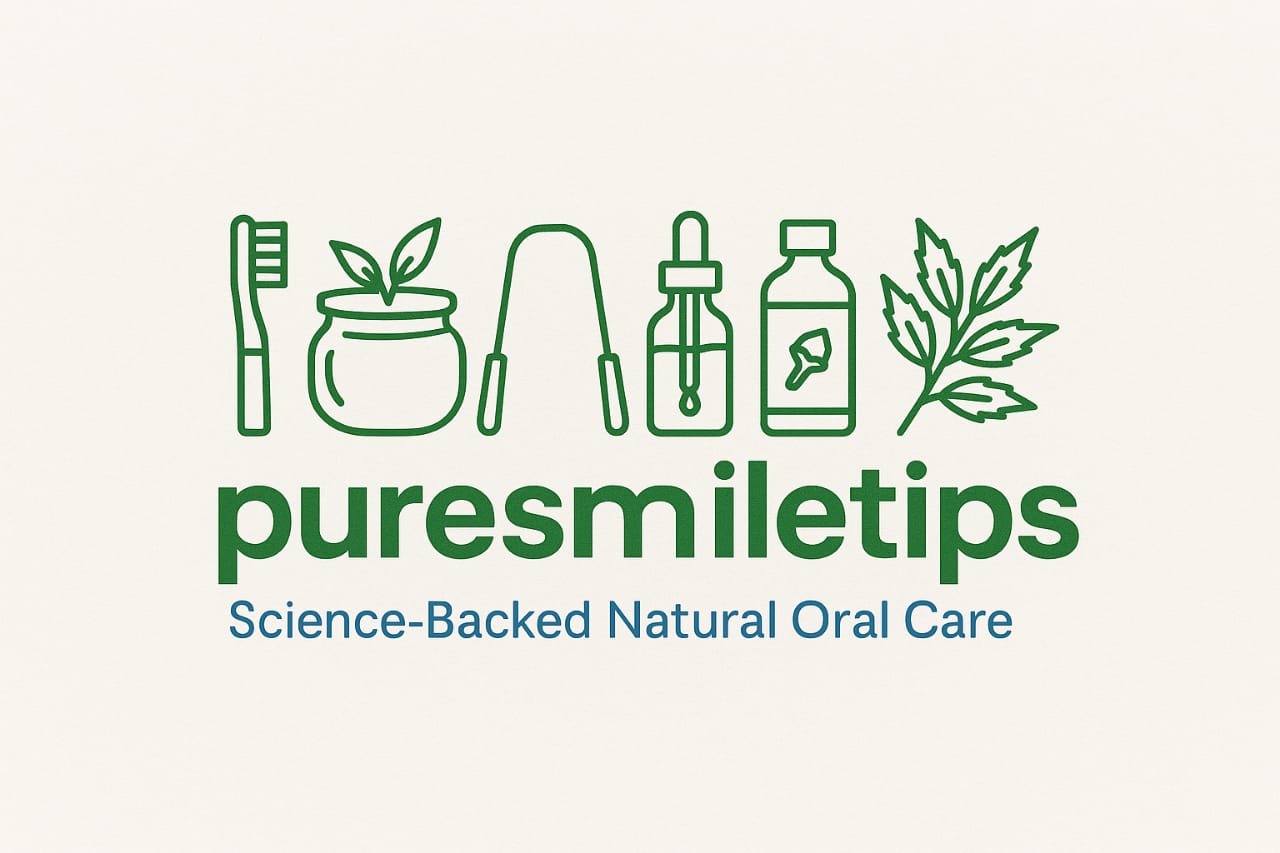
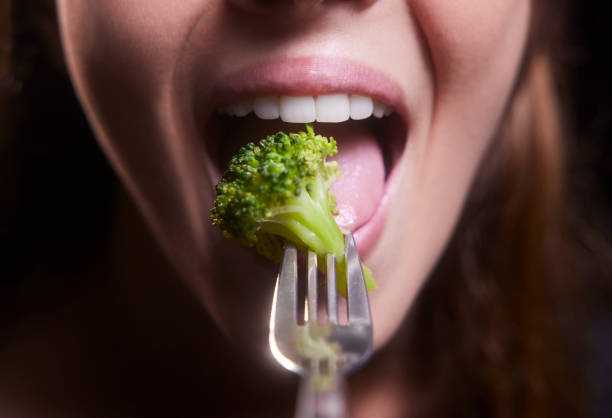
Great point! Oil pulling is indeed gentle for whitening teeth naturally. For readers who want the full list, here are 12 Dentist-Approved Foods to Remineralize Teeth to pair with these methods.
“Thanks for referencing this research! The Journal of Periodontology study indeed shows remarkable benefits. We’ve found wild salmon and kiwis to be particularly effective – have you tried incorporating these superfoods regularly?”
Some times its a pain in the ass to read what website owners wrote but this internet site is very user genial! .
Haha, thank you for that! We’ve all been there, wading through confusing websites. I’m thrilled to hear that you find ours to be a pleasant exception. We work hard to keep it that way!
Thank you for this excellent point! You’re absolutely right – nutrition is the foundation of strong teeth, and mineral-rich foods are crucial for the remineralization process.
For anyone reading this who wants to dive deeper into exactly which foods work best, I’ve put together a comprehensive guide that expands on this exact topic: The Best Foods to Remineralize Teeth: A Dentist-Approved Guide
The guide covers specific foods like cheese, leafy greens, and wild-caught salmon, and explains exactly how each one contributes to stronger enamel.
Thanks again for contributing to the conversation!